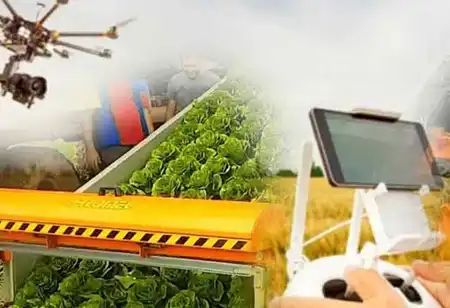Thank you for Subscribing to Agri Business Review Weekly Brief
Various Techniques of Vertical Farming
As urban populations continue to grow, entrepreneurs are exploring alternatives to traditional agriculture to feed everyone while minimizing the impact on our land and water resources.

By
Agri Business Review | Tuesday, April 26, 2022
Stay ahead of the industry with exclusive feature stories on the top companies, expert insights and the latest news delivered straight to your inbox. Subscribe today.
Forefathers began farming about 12,000 years ago. By growing and domesticating seeds, these formerly nomadic hunter-gatherers were able to abandon their nomadic lifestyles, establish stable and predictable food supplies, and, little did they know, alter the direction of the planet's future.
FREMONT, CA: As urban populations continue to grow, entrepreneurs are exploring alternatives to traditional agriculture to feed everyone while minimizing the impact on our land and water resources. Vertical farming is one such solution that has been adopted globally.
Vertical farming enables the cultivation of food crops in urban settings by planting them in vertically stacked layers to conserve space and use as little energy and water as possible for irrigation.
Hydroponics
It is a way of growing food in water without using soil. The primary benefit of this strategy is that it significantly minimizes soil-related cultivation issues such as soil-borne insects, pests, and illnesses.
Aeroponics
Aeroponics was developed in response to NASA's (National Aeronautical and Space Administration, USA) ambition in the 1990s to establish an effective method of growing plants in space.
Aeroponics does not need a growing medium and so does not require containers to cultivate crops. Aeroponics utilizes mist or nutrient solutions in place of water. Since the plants are attached to a support and the roots are sprayed with nutrient solution, this method requires very little space, very little water, and no soil.
Aquaponics
Aquaponics is a name formed by combining two terms: aquaculture, which refers to fish farming, and hydroponics, a technique for growing plants in the absence of soil to build symbiotic interactions between the plants and the fish.
The symbiosis is established by feeding nutrient-rich waste from fish tanks to hydroponic production beds as "fertigate." The hydroponic beds act as bio-filters, removing gases, acids, and chemicals from the water, such as ammonia, nitrates, and phosphates.
Additionally, the gravel beds support nitrifying bacteria, which aid in nutrient cycling and filter water. As a result, newly cleansed water can be recirculated into the fish tanks.
Vertical Farming's Benefits
Vertical farming has several advantages, making it an exciting prospect for agriculture's future. The area required is relatively low, water consumption is reduced by 80 percent, water is recycled and conserved, pesticides are avoided, and in the case of high-tech farms, the weather is not a factor.
A vertical farm enables urban farming to become a reality. And, because the farms are close by, the produce is delivered swiftly and is always fresh compared to the refrigerated stuff typically found in stores. Transit reductions reduce the cost of fossil fuels and their associated emissions and the spoilage related to transportation.
Vertical farming, however, like everything else, has limitations. The primary issue is the initial capital costs associated with creating the vertical farming system. Additionally, there are expenditures related to erecting the structures and automating them, such as computerized monitoring systems, remote control, and software systems, automated racking and stacking systems, programmable LED lighting systems, and climate control systems.





